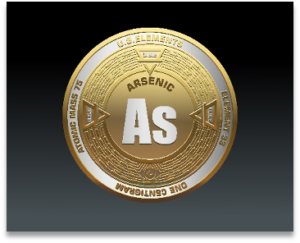Antimony may not be a household name, but its impact on modern industry and national security is undeniable. Used in everything from military-grade ammunition to flame retardants and advanced battery technology, this critical mineral plays a vital role in safeguarding American infrastructure. Despite its importance, the United States is almost entirely dependent on foreign sources—particularly China—for its supply. This article examines why antimony is essential, where it can be found domestically, and how securing a stable supply is critical for America’s future.
Why the U.S. Needs Antimony
Antimony’s primary application is in flame retardants, used extensively in electronics, textiles, and plastics to enhance fire resistance. It is also a crucial component in lead-acid batteries, which power military vehicles and backup energy storage systems. In national defense, antimony is used in armor-piercing ammunition, explosives, and missile components, making it indispensable to military operations. Additionally, antimony alloys improve the strength and corrosion resistance of various metals, extending their durability in harsh environments.
Where It’s Found Domestically
Historically, the United States produced antimony from mines in Idaho, Montana, and Nevada. However, domestic mining has significantly declined, leaving the U.S. reliant on imports—primarily from China, Russia, and Tajikistan. The Stibnite Gold Project in Idaho is one of the few remaining potential domestic sources. Reopening and expanding U.S.-based antimony mining operations could reduce import dependence and bolster national security.
Economic Realities
The global antimony market is volatile, with prices fluctuating based on supply disruptions and geopolitical tensions. China dominates production, controlling more than 70% of global output. The U.S. currently imports nearly all its antimony, making it vulnerable to supply chain disruptions. Establishing domestic production would help stabilize costs and ensure a reliable supply for key industries.
Processing and Technological Innovations
Antimony is primarily extracted from stibnite ore and refined through pyrometallurgical and hydrometallurgical processes. Recent advancements in recycling have also increased the recovery of antimony from industrial waste and lead-acid battery recycling. Investing in refining infrastructure and processing technologies could enhance U.S. production capacity and reduce reliance on imported refined antimony.
Abundance and Waste Recovery Potential
Antimony is relatively scarce, occurring at an average concentration of 0.2 parts per million in the Earth’s crust. However, it can be recovered from industrial byproducts, such as lead smelting residues and electronic waste. Expanding recycling initiatives could supplement primary production and reduce dependence on virgin ore extraction.
Time to Market
Developing new antimony mines and refining capacity in the U.S. could take several years due to permitting challenges and environmental regulations. However, fast-tracking strategic projects and investing in recycling infrastructure could accelerate supply chain development.
Current and Future Applications
Beyond its traditional uses in flame retardants and ammunition, antimony is gaining traction in next-generation battery technologies, such as liquid metal batteries for grid-scale energy storage. These innovations could further increase demand for antimony in the coming decades.
Impact on Everyday Life
Antimony-based flame retardants help prevent fires in consumer electronics, furniture, and clothing. Lead-acid batteries containing antimony are used in vehicles, backup power systems, and renewable energy storage, making this mineral a silent but essential part of modern life.
Consequences of Supply Shortages
A disruption in the antimony supply chain could have severe consequences for national defense, energy storage, and fire safety. Without a stable supply, the U.S. risks falling behind in military readiness and industrial resilience.
Import Dependence and Risks
The U.S. imports nearly 100% of its antimony, primarily from China and Russia—both geopolitical adversaries. This dependence leaves the nation vulnerable to trade restrictions and supply chain disruptions. Diversifying supply sources and increasing domestic production is critical to securing America’s economic and national security interests.
Conclusion
Antimony’s role in defense, energy storage, and fire safety underscores its status as a critical mineral. The United States’ overwhelming dependence on foreign sources—particularly from adversarial nations—poses a significant risk. By revitalizing domestic mining, investing in refining capabilities, and enhancing recycling initiatives, America can secure a stable antimony supply and reinforce its industrial and military strength. The time to act is now.
Stay tuned for next week’s article in the Critical Minerals Series, where we will explore another essential element shaping America’s future.







